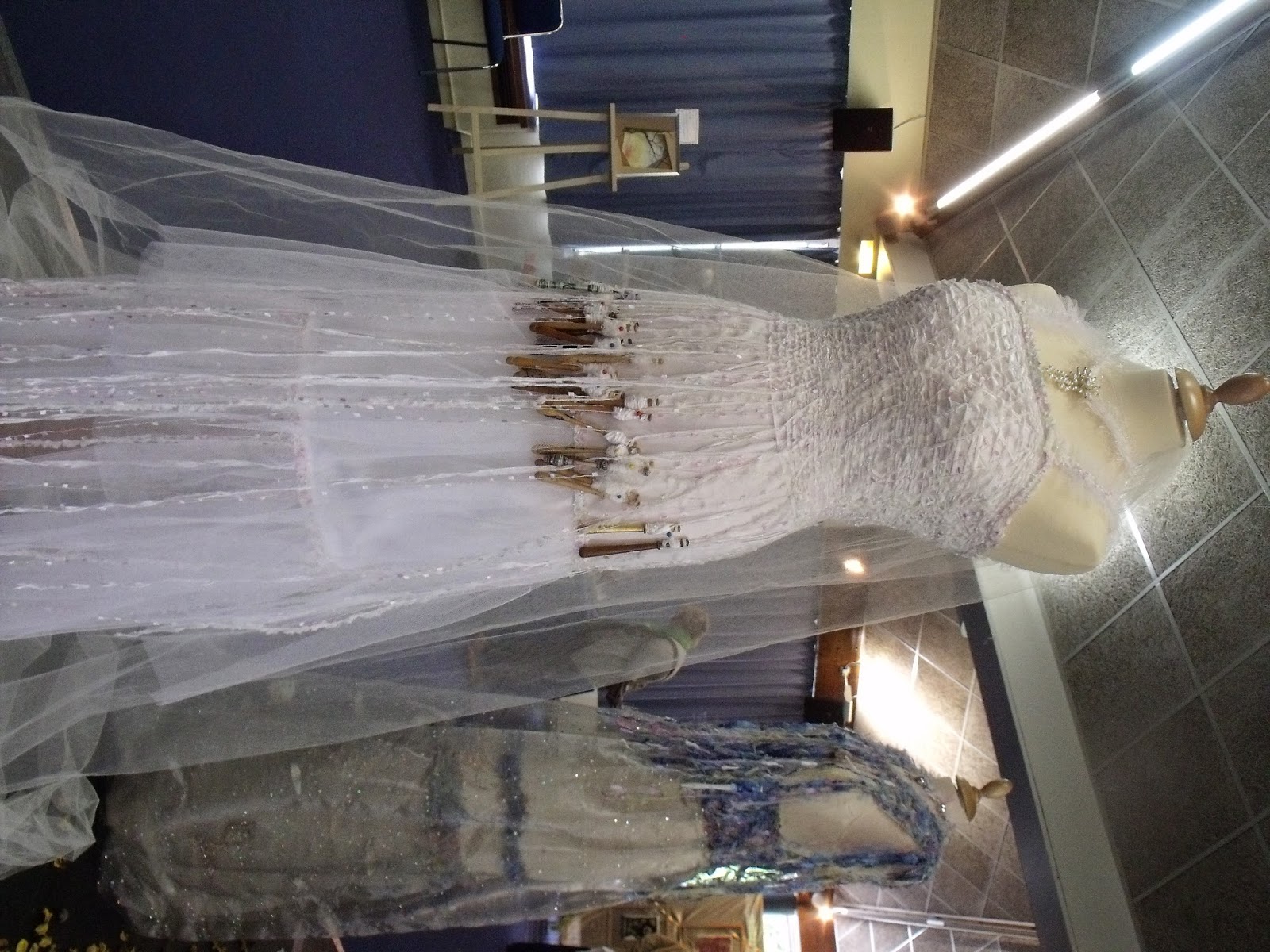Le Puy-en-Velay is a
medieval city in the Haute-Loire department in south-central France near the
Loire river. Le Puy is famous as the starting point for the pilgrimage route to
Santiago de Campostela. Each morning, pilgrims
are blessed in front of the statue of St. Jacques in the Cathedrale de Notre Dame du Puy before starting on the 1600 kilometer trek to Spain. The cathedral also has a Black Madonna and
beautiful art and architecture.
On a
hill overlooking the city is a huge iron statue of Notre Dame de France, made
from 213 Russian cannons from the Siege of Sebastopol .The view is well worth
the climb up the hill.
Le Puy is also known for
its green lentils- we had some for lunch with sausages and they are very good –
and for its green liquor “Verveine”, flavored with verbena. Verveine candies
make a nice souvenir. Narrow cobblestone
streets make driving and parking difficult but walking and shopping are
excellent.
Most important- Le Puy is famous for lace. Lace has been made in Le Puy since the 15th
century. According to legend, in 1407 the bishop of Le Puy asked a young
needlewoman named Isabelle Mamour to decorate the cloak of the Black
Virgin. Looking to create a fabric fine
enough for this task, she created lace.
It is also said that during the Middle Ages, because of its prominence
on the pilgrimage route, Le Puy attracted many merchants, shoppers and
travelling peddlars. It was the peddlars
who introduced lace in Le Puy and taught the locals how to make it. Whatever
the truth of these legends, there are many shops that sell lace and lace making
equipment.
Le Puy is well known for
Cluny lace, made with bobbins and continuous threads, with geometric motifs and
point d’esprit (leaves and tallies). You
can also find beautiful examples of blonde lace, made in silk.
We went to the Centre d’Enseignementde la Dentelle au Fuseaux, at 44 Rue Raphael.
This center’s goals are to maintain the tradition and practice of
lacemaking through teaching and to safeguard their lacemaking heritage. It offers on site classes in lacemaking and correspondence
courses. The building houses an exhibition room where we saw every type of
hats, bonnets, veils and mantillas you could imagine, in every type of lace. There are many different types of pillows
displayed, as well as hundreds of pieces of lace – on the walls, in drawers, on
pillows and on models. There is an
atelier where classes are taught and a shop, De Fil en Fuseau, next door, with
a large selection of books, pillows, bobbins, threads, patterns and lace-themed
souvenirs. The center also publishes a
quarterly magazine, “La Dentelle”.
The next morning we went
to “L’Atelier Conservatoire National de la Dentelle du Puy en Velay” at 32 rue
du 86th Regiment, Le Puy.
This is a national workshop, supported by the French Ministry of
Culture, created to protect France’s heritage of lacemaking. Their mission includes providing the State
with traditional lace (for example table linens for the Presidential Palace)
and to create contemporary lace pieces in collaboration with artists and
designers. The atelier employs a
director, a patternmaker, five lacemakers and an administrative assistant. The lacemakers are chosen by competition, and
the pieces they make are kept in the national collection. The workshop is open to the public for two
hours each day. The patternmaker and the
lacemakers explain (in French, bien sûr) the pieces they are working on – how the
artist conceived of the piece, how it was drawn and the patterns made, what
stitches and styles are chosen to interpret the design, how the laces are
compiled into the final piece and how it will be displayed. The day we were there, they were working on
an artist’s interpretation of a Persian carpet in Torchon lace (quite large,
perhaps five feet by seven feet), a Louis XIV style wig done in tape lace with
raised tallies, a tablecloth covered in books made of lace, and a group of very
realistic flowers and twigs done in silk on a round circle of lace ground. The lacemakers were very happy to answer
questions. No photographs, though. The studio is upstairs with
lots of light and there were display cases of pillows, bobbins and lace
everywhere. One interesting display was
a large bed pillow covered in black silk lace flies, designed by Didier Trenet –
très interessant! This link takes you to an online book - page 14 is M. Trenet's flies (not on a pillow, in a frame) and page 22 is a map of Europe in lace, made by the atelier.
The next day, we drove
to Retournac, a small quiet town about 40 kilometers (45 minutes) from Le
Puy. There we visited the Museé des Manufactures de Dentelles, a museum dedicated to “the men and women who lived
to the rhythm of bobbins. Discover their
daily life, their beliefs and their cares”.
The large stone building has a collection of more than 450,000 pieces of
lace. There is an enormous display covering the history of lace from the middle
ages to the present, with brochures in both French and English. There are displays about the working life of
lacemakers, how lace is designed, the home life of the workers, and many
examples of finished articles of clothing.
There is a fascinating collection of lace making machines – even one
that you can crank by hand. And of
course, there is a shop where you can buy souvenirs and patterns. I have been a subscriber to their patterns
for several years, so it was a special treat to be able to purchase some in
person. The patterns are mostly of Cluny
lace, drawn by their designers from pieces of lace in their collection.
We wanted to see the Musee Crozatier, with an excellent collection of lace, but it was closed for renovation. Maybe next time.
























